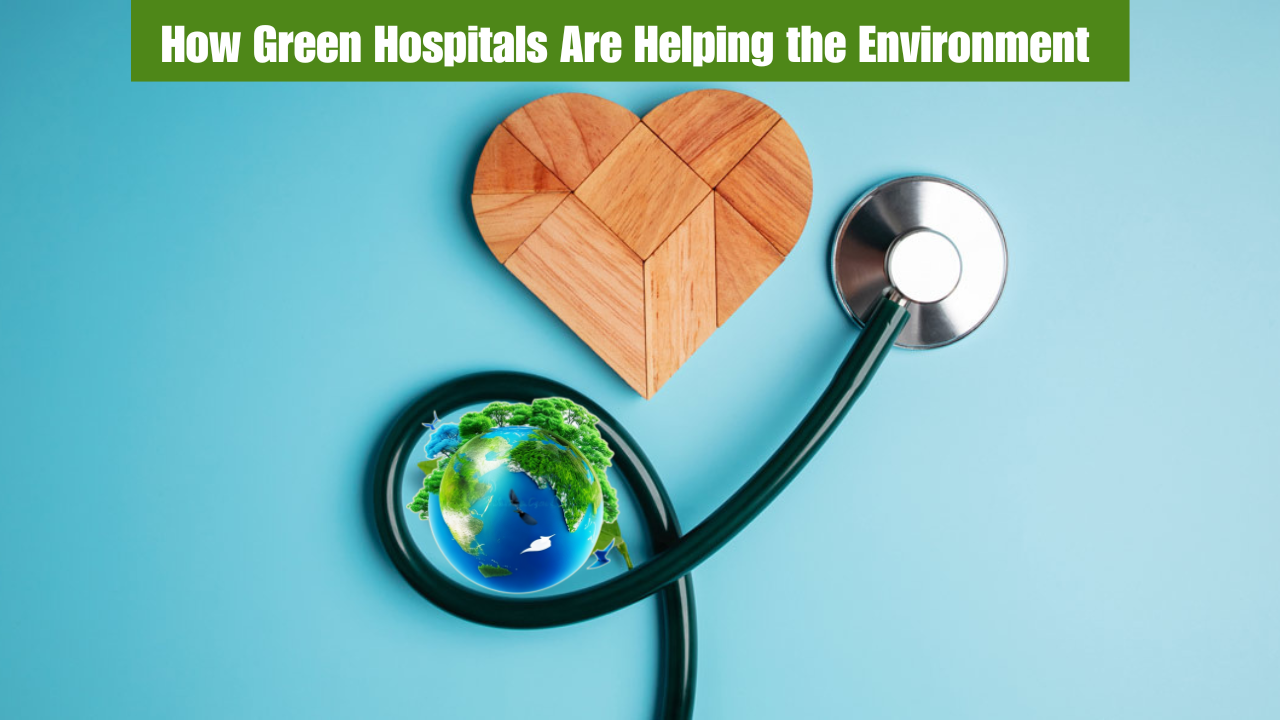That contest all over the globe is concerning climate change. It doesn’t limit the discussion on climatic problems, but it is much more than that. Climate change has become a big thing as it talks about profound changes in the harmony of health, lifestyle, and environments. Problems like increase in temperature, lack of clean water and air, food insecurity have now become common. In such a situation, it has become necessary that every sector, especially health services, work in an environmentally friendly manner. The idea of ”Green Hospital” is linked to this thought.
Climate change and the challenge of medicine
The World Health Organization estimates that between 2030 and 2050, climate change will likely result in an additional 2.5 lakh fatalities year. These include heat-related illnesses, diarrhea, malaria, and m Along with this, issues like excessive rainfall, floods, drought, disruption in the food system and impact on mental health are also coming to the fore.
The healthcare sector itself is also contributing to pollution. For example:
- About 46 million tons of CO2 are emitted every year from the health sector in France.
- The UK’s NHS emits about 18 million tons of CO2 every year.
- Emissions from healthcare institutions in the US increased by 6% between 2010 and 2018.
What is a Green Hospital?
Green hospital means a hospital that works in an environmentally friendly way. In this, energy, water, building materials, waste management etc. are controlled in such a way that pollution is reduced and there is no wastage of resources.
Some of the key features of a green hospital are:
- Energy savings and use of renewable energy (such as solar panels, wind turbines)
- Maximizing natural light and ventilation
- Construction of green roofs and gardens
- Use of sustainable building materials
- Smart building management systems
- Proper disposal of medical waste
Role of environmental issues
1. Medical waste
Improper disposal of medical waste causes serious environmental and health problems. According to reports, 85% of medical waste is non-hazardous and can be recycled properly.
2. Water
A considerable amount of water is consumed by the healthcare facilities. Rainwater harvesting is useful for gardening, cooling systems, and toilet flushing. Grey water systems cleanse and recycle water for use in laundry, hand washing, and bathing.
3. Use the right chemicals
Health care facilities must replace the hazardous chemicals used for disinfection with safe and environmentally friendly disinfection alternatives such as mercury-containing devices.
4. Hospital burns
Fossil fuel-powered vehicles, burning of medical waste and use of conventional energy sources make hospitals a major source of pollution. Services such as telemedicine can reduce patient travel, thereby reducing pollution.
5. Plastics
The healthcare sector uses a lot of single-use plastics. Reusable sharps bins and better recycling systems can address this.
6. Food
Meat production consumes a lot of water and gives rise to antibiotic superbugs. Vegetarian alternatives could be promoted in hospitals instead.
7. Cleaning products
Some cleaning solutions contain some dangerous chemicals for the infants or the elderly. Thus, it is advisable to shift towards environmentally conscious or ecologically friendly pathways.
Impact of money and investments
- One hospital saved 2.7 million liters of water and $2233 every year by simply adopting waterless surgical scrubs.
- Another hospital saved $694,000 annually through recycling and medical waste management.
- The NHS saved millions of pounds of energy by switching to LED lighting and solar power.
- A Belgian hospital saved 71% of energy by using thermal energy storage instead of conventional heating.
Challenges: What to know
- Need for 24×7 operations
- Pressure of backup systems
- Complexity of safety and health regulations
- Limited options due to infection control
- High energy and water consumption
- Frequent renovations
- Limited budget and technology options
- Lack of awareness and training
- Traditional thinking and resistance to change
Finally
Green Hospital is not just a building, but a thought – a thought that works for the betterment of environment, health and society. When a hospital incorporates the environment in its operations, it makes not just the patients but the entire society healthy. Now is the time to make healthcare ‘sustainable’, so that future generations can also have a safe and clean life.









